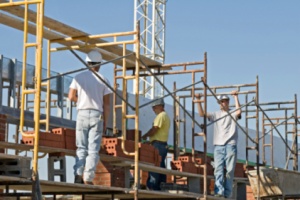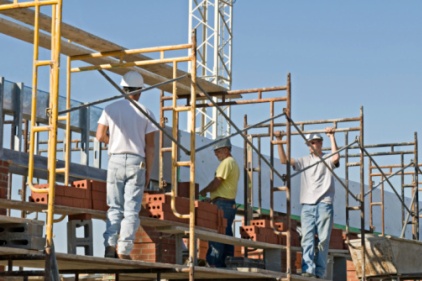 The revised ANSI/ASSE A10.32 Standard ‘Personal Fall Protection for Use in Construction and Demolition Operations’ contains new equipment criteria, providing minimum guidelines for fall protection equipment, to establish performance criteria for this equipment in construction and demolition and to make recommendations for use and inspection.
The revised ANSI/ASSE A10.32 Standard ‘Personal Fall Protection for Use in Construction and Demolition Operations’ contains new equipment criteria, providing minimum guidelines for fall protection equipment, to establish performance criteria for this equipment in construction and demolition and to make recommendations for use and inspection.
The American Society of Safety Engineers (ASSE) said the revisions -- released last week -- are part of the association’s support for nationwide nationwide efforts to prevent worker falls and fatalities on construction sites. In 2010, more than 10,000 construction workers were injured as a result of falling while working from heights in the U.S. and another 225 were killed. Job-related injuries and fatalities due to falls have prompted an ongoing fall prevention campaign by the OSHA and the National Institute of Occupational Safety and Health (NIOSH) that focuses on providing prevention information and training materials on three major types of falls: from roofs, from ladders and from scaffolds.
For EHS professionals, the revised standard “will further enhance our ability to provide a safe workplace for those employed on construction and demolition sites,” according to Richard King, A10 Standard Committee Chairman.
A webinar conducted by ASSE this past December entitled ‘ANSI/ASSE A10.32-2013 – Personal Fall Protection Used in Construction & Demolition Operations’ gave attendees an advance look at the key changes in the Standard.
To further protect the users of fall protection systems the Standard permits:
- Only full body harnesses shall be used for fall arrest. The fall arrest attachment point of the body harness shall be at the center of the user’s back near shoulder level.
- Maximum arresting force imposed on the user’s body shall not exceed 1,800 pounds.
- All equipment used in a fall protection system shall be compatible to limit force levels, maintain system strength and prevent accidental disengagement.
- Equipment serviced by the manufacturer or their authorized representative shall be capable of meeting all performance requirements of this standard.
“Equally as important as the new equipment criteria is the standard’s emphasis on the need for pre-planning, job hazard analysis (JSA) and a written site specific safety plan,” explained Dan Paine, A10.32 Subgroup Chair, adding that the Standard also provides guidance for selecting passive and active fall protection, as well as qualified professionals who are able to select proper anchorages.
The A10.32 standard was first approved in 2004, and was viewed as the replacement of the A10.14 standard released in 1991.
Click here for more information about the ANSI/ASSE A10.32 Standard or ASSE’s support of the OSHA/NIOSH Fall Protection Campaign.


